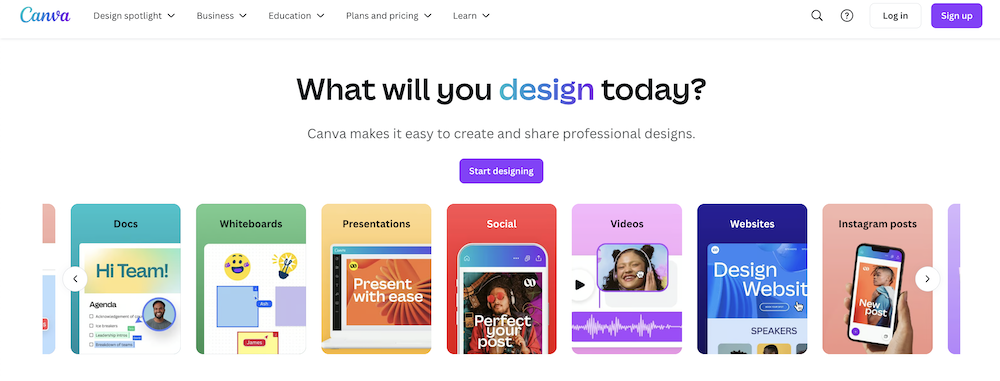
Dropshipping
40 Best Dropshipping Clothing Suppliers in 2025
As a newcomer in the dropshipping clothing market, you might find yourself pondering whether the dropshipping clothing niche is truly...
How to Choose The Right Type of Retail Store for Your Clothing Business?
Business Kick-Starter Guides

With so many options available, choosing the right type of retail store for your clothing business can be somewhat of a challenge.
You want to make sure you pick one that aligns with your selling goals but also your budget.
In this article, we’ll break down the different types of retail stores, their pros and cons, and the main factors to consider when making your decision.
A retail store is a place where products go from shelves into the hands of consumers, and it can take two main forms: physical locations and online platforms.
Physical stores allow customers to experience products firsthand—seeing, touching, and trying on clothing before making a purchase. This sensory experience can be a big advantage for shoppers who value the ability to ensure a perfect fit or feel of the fabric.
On the other hand, online stores bring a whole new level of convenience, letting shoppers browse from the comfort of their couches, anytime and anywhere.
Each option has its own perks, and the choice between them often comes down to personal preferences and shopping habits.
Before diving into the exciting world of retail, it’s crucial to understand your market inside and out.
Start by identifying your target audience—who are you selling to?
Is it men, women, or perhaps a specific niche like luxury fashion?
Once you’ve pinpointed your audience, dig deeper into their preferences.
What styles and trends catch their eye?
What are they searching for the most?
Use surveys and tools like SurveyMonkey or Google Forms to gather valuable feedback. Focus groups can also provide insights, and platforms like Facebook Groups or Reddit can help you engage with potential customers and get their opinions.

Additionally, take a good look at your competitors. Analyze what’s working for them and where they may be falling short.
Tools like SEMrush or Ahrefs can help you out here by allowing you to see which keywords are they targeting and for which queries are they ranking highest.

A well-thought-out business plan acts as your roadmap, guiding you through the ups and downs of your retail journey.
Start by setting clear goals that define what success looks like for you.
Are you aiming for high sales volume, or is your focus on building a loyal customer base?
Next, dive into budget planning. Use tools like Microsoft Excel to outline all your costs—everything from rent and utilities to inventory and marketing. Be realistic about how much capital you’ll need to get started and sustain your business.
Additionally, consider your marketing strategies. Decide how you’ll reach your customers: will you rely on social media ads, influencer partnerships, or email campaigns?
If you opt for a physical retail store, remember that high foot traffic areas can significantly boost visibility but may come with higher rent costs. Carefully evaluate potential retail locations and analyze foot traffic.
If you opt for an online store, platforms like Shopify and BigCommerce can help you set up an online store quickly and easily.

Start by developing your brand’s visual elements—consistent color schemes, logos, and fonts help build recognition and trust.
Use photo apps and video tools like Canva or Adobe Illustrator to create eye-catching visuals that reflect your brand’s personality.

But you shouldn’t stop there. The voice and tone you use to communicate with customers should reflect your brand’s identity as well.
Tools like Jasper can help ensure your site’s copy is polished and professional.

Reliable suppliers are essential for ensuring you have quality products on time.
Begin your search by researching suppliers who align with your brand values and quality standards. Use platforms like Worldwide Brands, Wholesale Central, and Chrunchbase, or look through potential suppliers.
Once you find them, don’t shy away from negotiating terms. Discuss payment schedules, delivery expectations, and returns policies upfront to avoid any surprises later on.

Setting up your retail store is a critical step in ensuring a positive shopping experience for your customers.
Here are checklists to guide you through the process:
Physical store setup
| Category | Details |
|---|---|
| ✅ Store layout | • Create a floor plan that facilitates smooth traffic flow. |
| ✅ Interior design | • Choose a color scheme that is the same or similar to your brand identity. |
| ✅ Product displays | • Ensure key products are prominently featured at eye level. |
| ✅ Checkout area | • Design a comfortable and efficient checkout area to reduce wait times. |
| ✅ Signage | • Create clear signs for sections and promotions. • Ensure that your store’s name and logo are visible and inviting. |
| ✅ Inventory management | • Set up a system for tracking inventory levels and sales. |
Online store setup
| ✅ Choose an eCommerce Platform | • Select a user-friendly platform |
| ✅ Domain name and hosting | • Register a domain name. • Choose a reliable hosting service. |
| ✅ Website design | • Use templates to create a professional-looking site. • Ensure your website is mobile-friendly. |
| ✅ Product listings | • Create high-quality product images and write compelling descriptions. |
| ✅ SEO optimization | • Use Ahrefs or SEMrush to identify relevant keywords. • Optimize product titles, descriptions, and images. |
| ✅ Payment and shipping | • Set up secure payment gateways like PayPal or Stripe. • Determine shipping options and costs, and clearly communicate these to customers. |
| ✅ Testing and launch | • Test the website for functionality, including the checkout process. • Launch your site with a marketing plan in place to drive traffic. |
Boutiques are a type of retail stores that focus on selling a variety of collections of clothing and accessories, often targeting niche markets.
These shops are known for their distinctive, often exclusive product selections and personalized shopping experiences.
| Pros | Cons |
|---|---|
| • Attracts loyal customers due to personalized service. • Offers unique products that stand out from mass-market retailers. • Higher profit margins on exclusive items. |
• Higher operating costs and overhead. • Dependence on location for foot traffic and visibility. |
Outlet stores typically offer discounted prices on overstock or past-season items, making them a favorite destination for budget-conscious shoppers seeking quality clothing at bargain prices.
Outlets present an excellent opportunity to clear out inventory while still driving sales, as many customers are always on the lookout for great deals.
| Pros | Cons |
|---|---|
| • Attracts budget-conscious shoppers looking for deals. • Efficient inventory management by moving unsold items. |
• Lower profit margins due to discounts. |
Pop-up stores are short-term retail stores that enable businesses to test out new locations or product offerings without the need for long-term leases.
One of the standout features of pop-up shops is the sense of urgency and exclusivity they create.
Since these stores are temporary, customers feel a unique pressure to buy now or miss out, driving impulse purchases and generating excitement around your brand. Think of limited-edition releases or special events that draw people in and create buzz.
| Pros | Cons |
|---|---|
| • Low-risk way to test new markets. • Creates urgency that encourages impulse buying. |
• Limited presence may not capture all potential customers. |
An online store allows clothing businesses to sell products through a website, reaching customers globally without the overhead costs associated with physical stores.
This format offers the convenience of 24/7 shopping and flexible inventory management, including the option for dropshipping which means products can go directly from the supplier to the customer without the need to hold stock.
| Pros | Cons |
|---|---|
| • Lower operating costs and reduced financial risk. • Unlimited potential for customer reach and scalability. • Flexibility in inventory management, including dropshipping options. |
• Dependence on digital marketing for customer acquisition. • Challenges in building brand loyalty compared to physical interactions. |
Begin by asking yourself a few fundamental questions starting with defining your audience.
Next, consider their preferences.
Additionally, it’s important to identify their shopping habits.
You can’t start planning anything before you evaluate your investment possibilities.
Physical stores typically involve considerable upfront costs, including rent, renovations, and inventory storage.
On the other hand, online stores tend to have lower initial expenses, but you should still account for hosting fees and digital marketing costs.
Keeping an eye on the competition can provide invaluable insights for your business strategy.
Do a competitive analysis of other clothing stores in your area.
For example, if local retailers are focused on mainstream fashion, you might find success by introducing a boutique that specializes in unique, luxury pieces.
Starting a clothing business can feel overwhelming, but partnering with BrandsGateway can significantly simplify the process.
As a trusted wholesale and dropshipping supplier, BrandsGateway offers access to:
Whether you opt for a boutique, an outlet, a pop-up store, or an online store, each type has its own advantages and disadvantages.
It’s essential to evaluate your objectives, available resources, and target audience to make a well-informed decision.
By aligning your retail store type with your unique vision and understanding your customers’ preferences, you can create a thriving clothing retail business.
What is dropshipping?